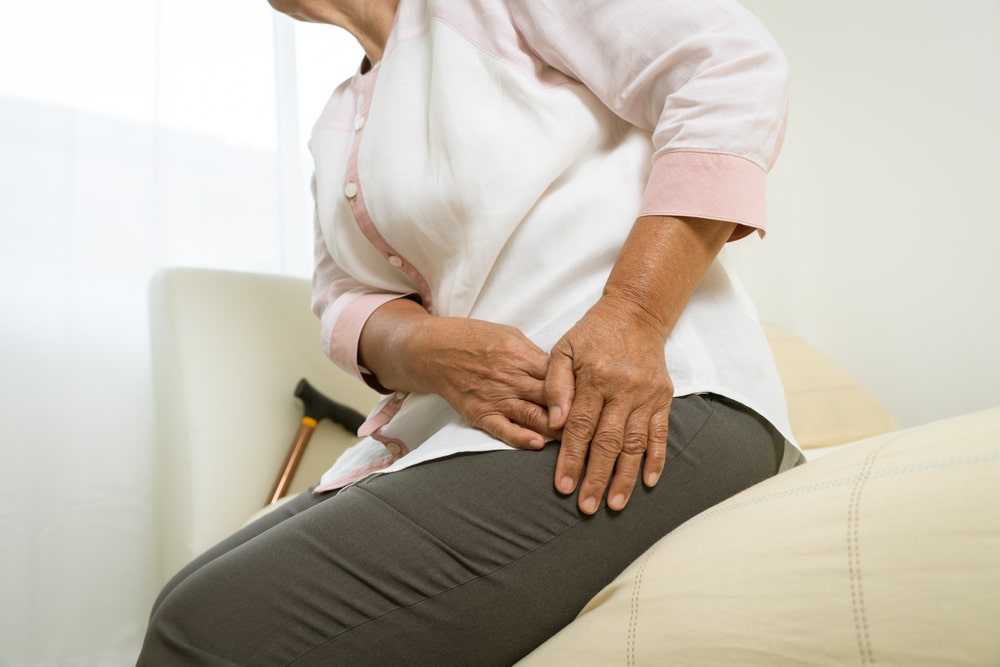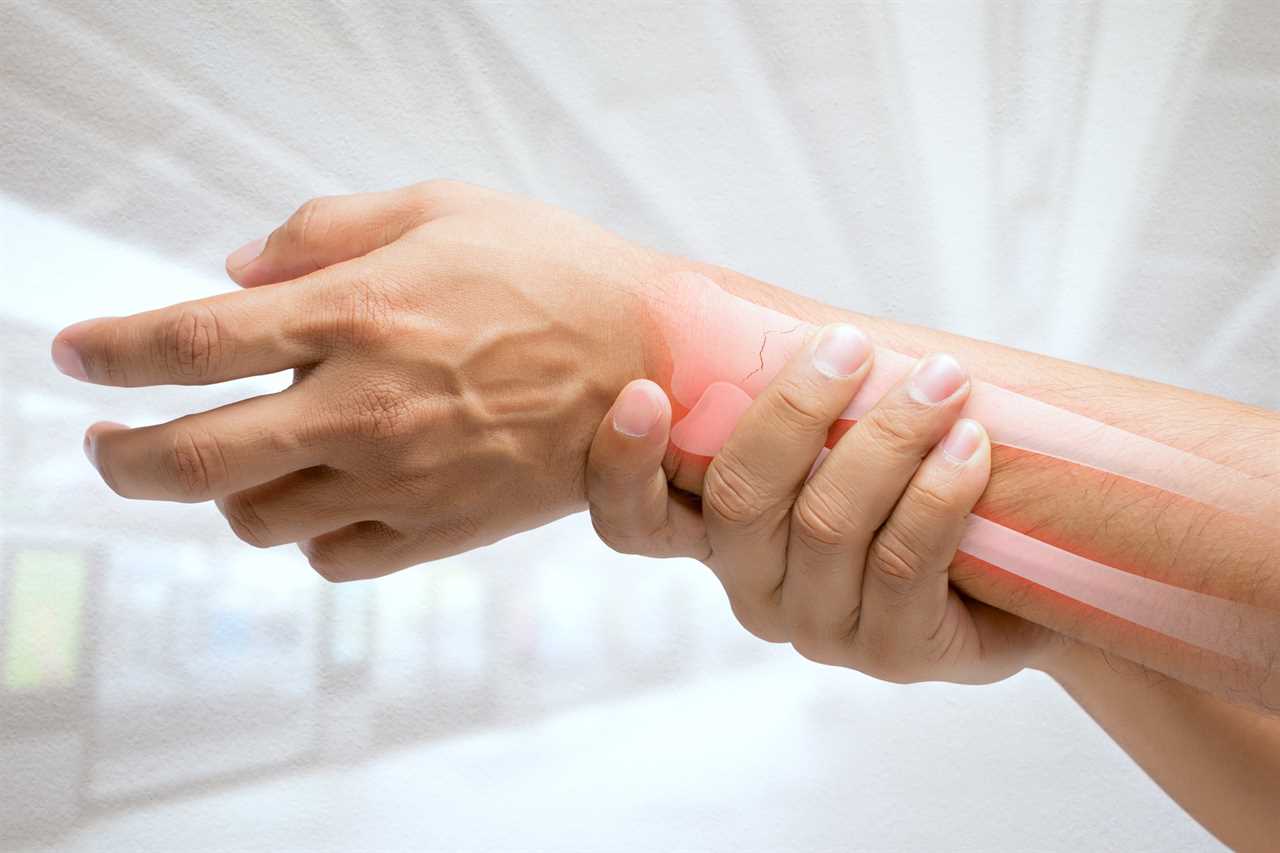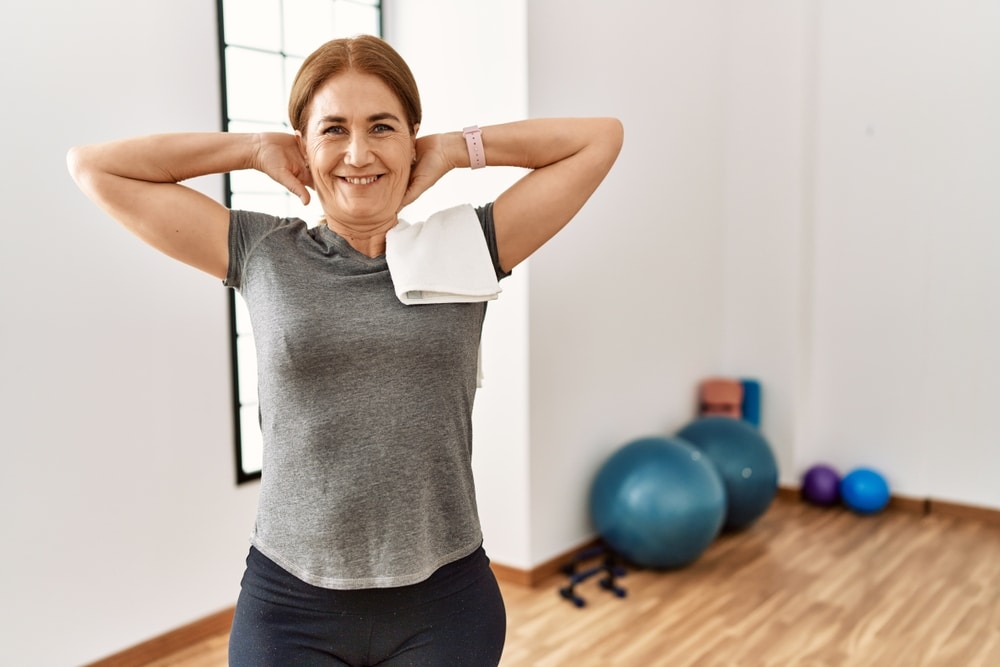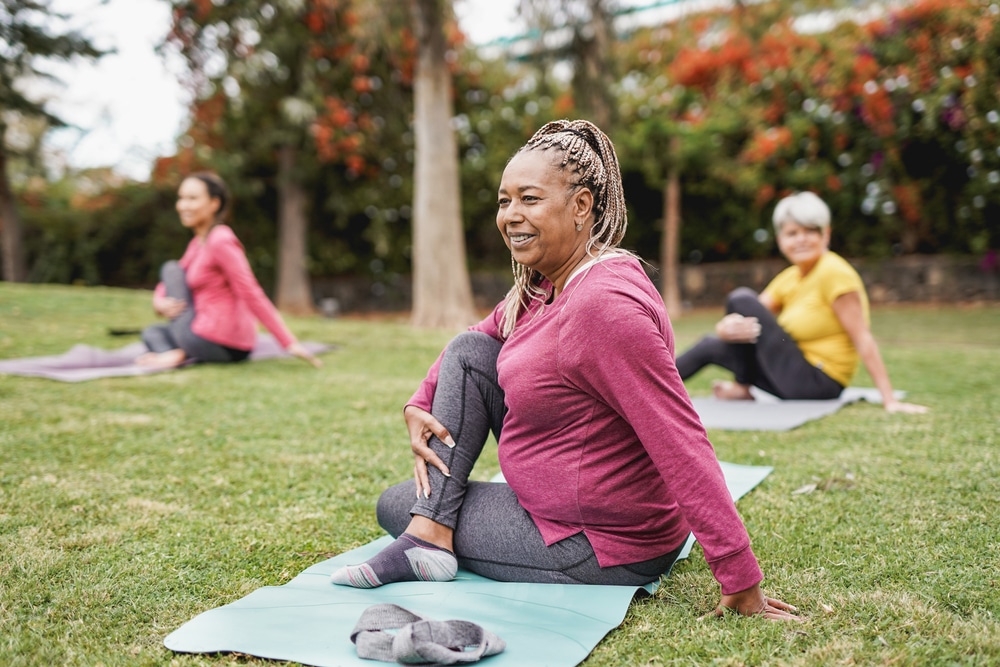Osteoporosis is a condition that weakens bones, making them fragile and more prone to fractures, and is a common concern among older adults. In fact, there are an estimated 54 million Americans living with osteoporosis.
There are several risk factors associated with osteoporosis. Some of these factors can be controlled, and some cannot.
While the risk of developing osteoporosis increases with age, there are certain factors that can put you at a higher risk.
Let’s explore a brief overview of osteoporosis, the most common risk factors, and what you can do now to help prevent it.
What is Osteoporosis?

Photo Credit: Shutterstock
Osteoporosis is a bone disease that develops when bone mass and bone mineral density decrease. This significantly weakens bones, which increases the risk of fractures and broken bones.
The biggest culprit behind osteoporosis is age. Your bones are in a constant state of renewal, meaning new bone is made, and old bone is broken down. When you’re younger, the body makes new bone faster than it breaks down, which increases bone mass.
Once you hit your 20s, the bone renewal process slows down, and most people reach peak bone mass by 30 years old. From there, as you age, bone mass is lost faster than it’s created — thus putting you at risk for osteoporosis.
Osteoporosis Risk Factors You Can’t Control

Photo Credit: Depositphotos
Unfortunately, there are uncontrollable risk factors for osteoporosis that you cannot change. These include:
- Age: The risk of osteoporosis increases as you get older, particularly for women over the age of 50 and men over the age of 70.
- Gender: Women are more likely to develop osteoporosis than men, especially after menopause. Around 50 percent of women in the U.S. age 50 or older will break a bone due to osteoporosis.
- Family history: If you have a family history of osteoporosis or fractures, you may be at a higher risk.
- Menopause: Because menopause leads to increased bone loss due to a decrease in estrogen, menopausal women are more at risk of developing osteoporosis.
- Previous bone fracture: If you’ve ever broken a bone, you’re more at risk for osteoporosis.
- Medications: Sometimes, certain health conditions require medications that could potentially increase your osteoporosis risk. Some of these include corticosteroids, glucocorticoids, and certain medications for diabetes or depression. You can always speak with your doctor about any possible osteoporosis risks before starting a new medication.
- Certain diseases: Diseases such as rheumatoid arthritis, COPD, Crohn’s disease, IBS, coeliac disease, endocrine disorders, HIV/AIDS, certain cancers, and chronic kidney disease may increase your osteoporosis risk.
Osteoporosis Risk Factors You Can Actually Control

Photo Credit: Shutterstock
Certain lifestyle and dietary choices can put you at higher risk for osteoporosis. The good news? These can all be changed.
Here are the biggest controllable risk factors for osteoporosis:
- Low body weight: It’s important to maintain a healthy weight, since being underweight (a BMI below 19) can lead to decreased bone mass.
- Smoking: Smoking can decrease bone density. Smokers have double the risk of hip fracture compared to non-smokers.
- Excessive alcohol consumption: Drinking too much on a regular basis can weaken bones increase the risk of fractures.
- Poor diet: Inadequate intake of calcium and vitamin D can contribute to weakened bones. A diet low in dairy products, leafy greens, and other sources of calcium can also be a risk factor.
- Lack of exercise: Lack of weight-bearing exercise and muscle-strengthening activities can increase the risk of osteoporosis.
- Eating disorders: Anorexia or bulimia can lead to extreme weight loss, which is dangerous for bone health.
How to Help Prevent Osteoporosis Now

Photo Credit: Shutterstock
So, is osteoporosis preventable? While the uncontrollable risk factors are always there, it doesn’t mean you will end up with the disease.
Fortunately, there are things you can start right now to help prevent osteoporosis. The sooner you start taking care of your bones, the better off you’ll be when you reach your later years. (It’s never too late to make a change!)
Here are some tips for preventing osteoporosis:
- Boost your vitamin D and calcium intake. Both are essential in maintaining strong bones! You can get vitamin D and calcium through your diet, but supplements can help as well. (Always speak with your doctor before starting a supplement regimen.) Some calcium-rich foods include Greek yogurt, broccoli, leafy greens, oranges, beans, spinach, tofu, almonds, and milk. Vitamin D-rich foods include yogurt, eggs, salmon, mushrooms, and fortified milk.
- Add more protein to your diet, too. Some studies have shown that eating protein may increase bone mineral density. Some of the best protein sources include lean beef, chicken, salmon, eggs, peanut butter, pasta, lentils, and low-fat cottage cheese. The recommended daily protein intake is 0.4 grams per pound of body weight.
- Create a healthy lifestyle. This includes quitting smoking, cutting back on alcohol, maintaining a healthy weight, and sticking to a well-balanced diet that includes fruits, vegetables, whole grains, and lean proteins.
- Exercise! Resistance exercises and strength training are two great ways to improve bone health. Strength training, in particular, trains the muscle and connective tissue surrounding your bones, which helps improve bone density and prevent fractures.
Remember, it’s never too late to start making positive changes! A healthy lifestyle that includes a balanced diet, exercise, and avoiding risk factors like smoking can go a long way in preventing osteoporosis and maintaining strong bones throughout your lifetime.
Of course, you should always consult with a healthcare professional for personalized guidance and recommendations.
Yoga For Beginners | A Complete Guide To Get Started

Photo Credit: Shutterstock
If you’ve wanted to begin yoga but don’t know where to start, have no fear! This yoga for beginners guide has everything you need to succeed.
Learn the different types and benefits of yoga, as well as guidance on how to get started and choose the practice that works best for you!
Yoga For Beginners | A Complete Guide To Get Started
7 Best Supplements For Menopause Weight Gain

Photo Credit: Shutterstock
Menopause—typically diagnosed after you’ve gone 12 months without a period—can occur in your 40s or 50s, but the average age is 51 for women in the United States.
For many women, menopausal weight gain is a real issue. The silver lining? It’s normal! But with the right diet, lifestyle, and menopause supplements, it doesn’t have to be.
7 Best Supplements For Menopause Weight Gain
Collagen Protein vs. Whey Protein: Which One Is Right For You?

Photo Credit: Shutterstock
If your diet or fitness regimen includes daily vitamins and supplements, you’re likely familiar with the benefits of collagen peptides and whey proteins.
While both are beneficial to your joint and muscle health (especially if you work out often), many people often wonder: what exactly is the difference between collagen protein vs. whey protein?
Collagen Protein vs. Whey Protein: What’s Right For You?
*** We deeply appreciate our sponsor *** |
| [TAG7]
Image Credit: Stacy Robinson / AuthorsUSA.com |
By: Chris Freytag, CPT
Title: Common Osteoporosis Risk Factors You Can Actually Control
Sourced From: gethealthyu.com/common-osteoporosis-risk-factors-you-can-actually-control/
Published Date: Sat, 09 Dec 2023 17:40:00 +0000
Did you miss our previous article...
https://naturesmart.us/fitness/post-workout-stretches
 HealthWellnessFitnessBeautyVideosPrivacy PolicyTerms And Conditions
HealthWellnessFitnessBeautyVideosPrivacy PolicyTerms And Conditions
